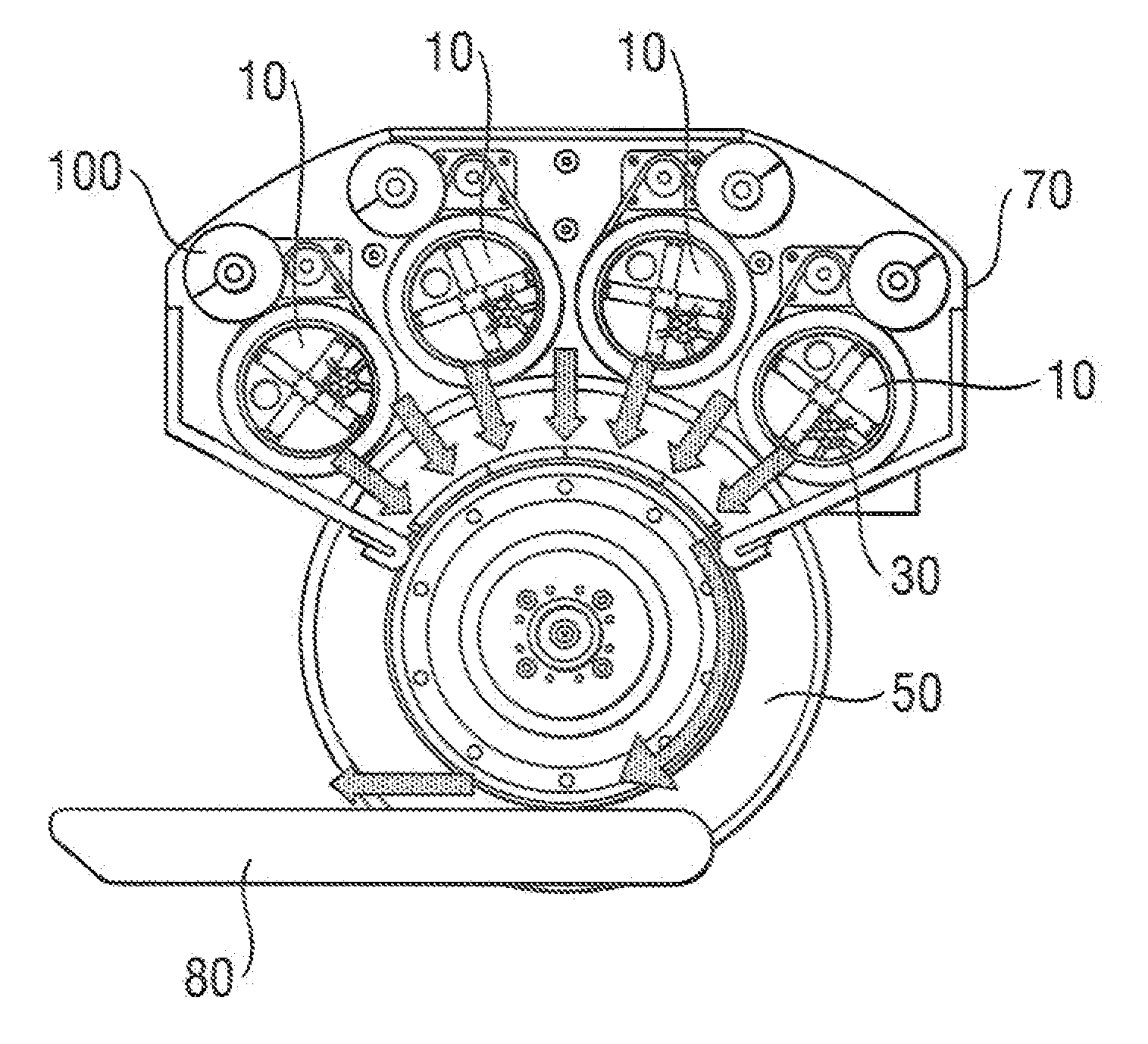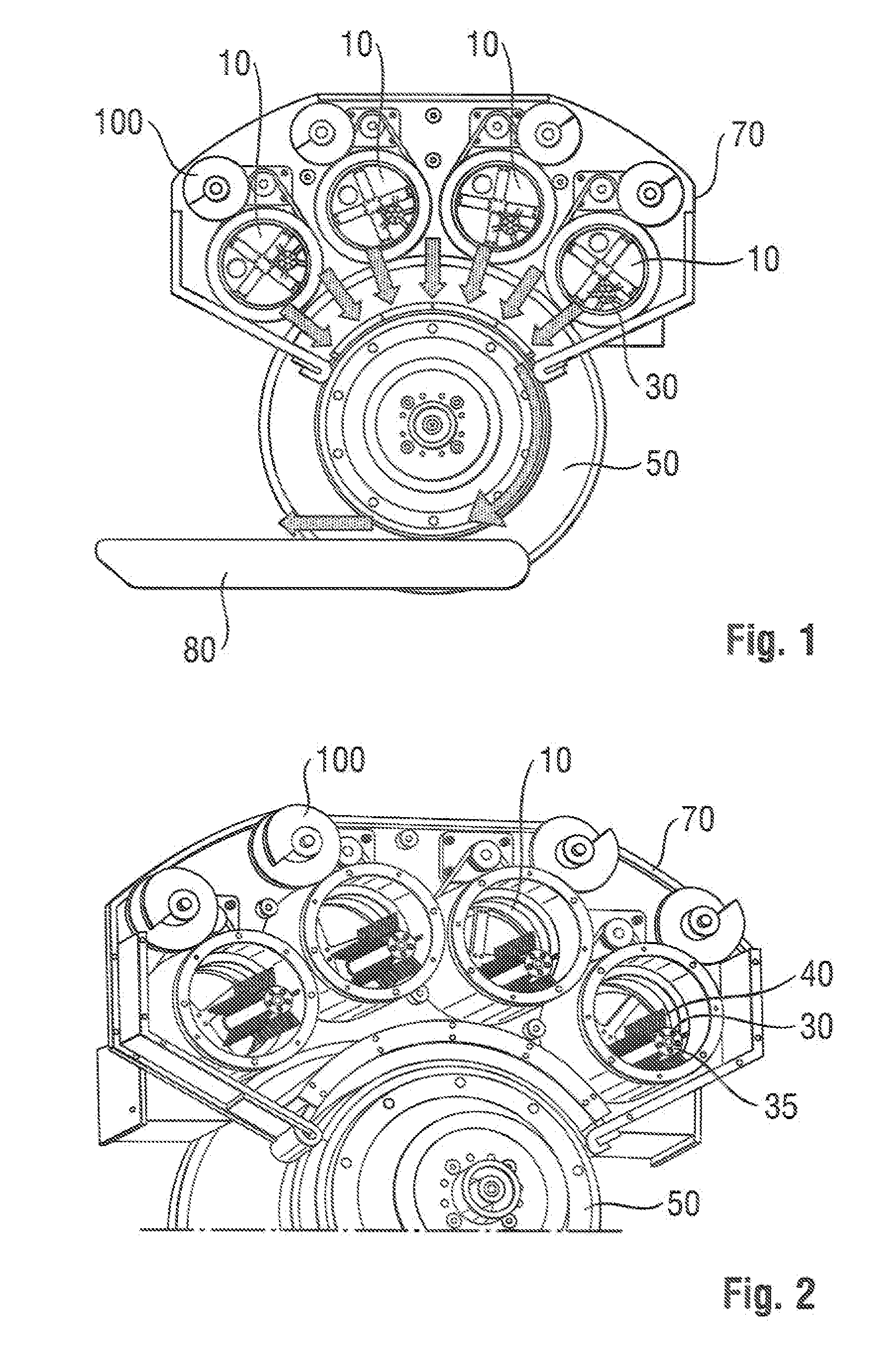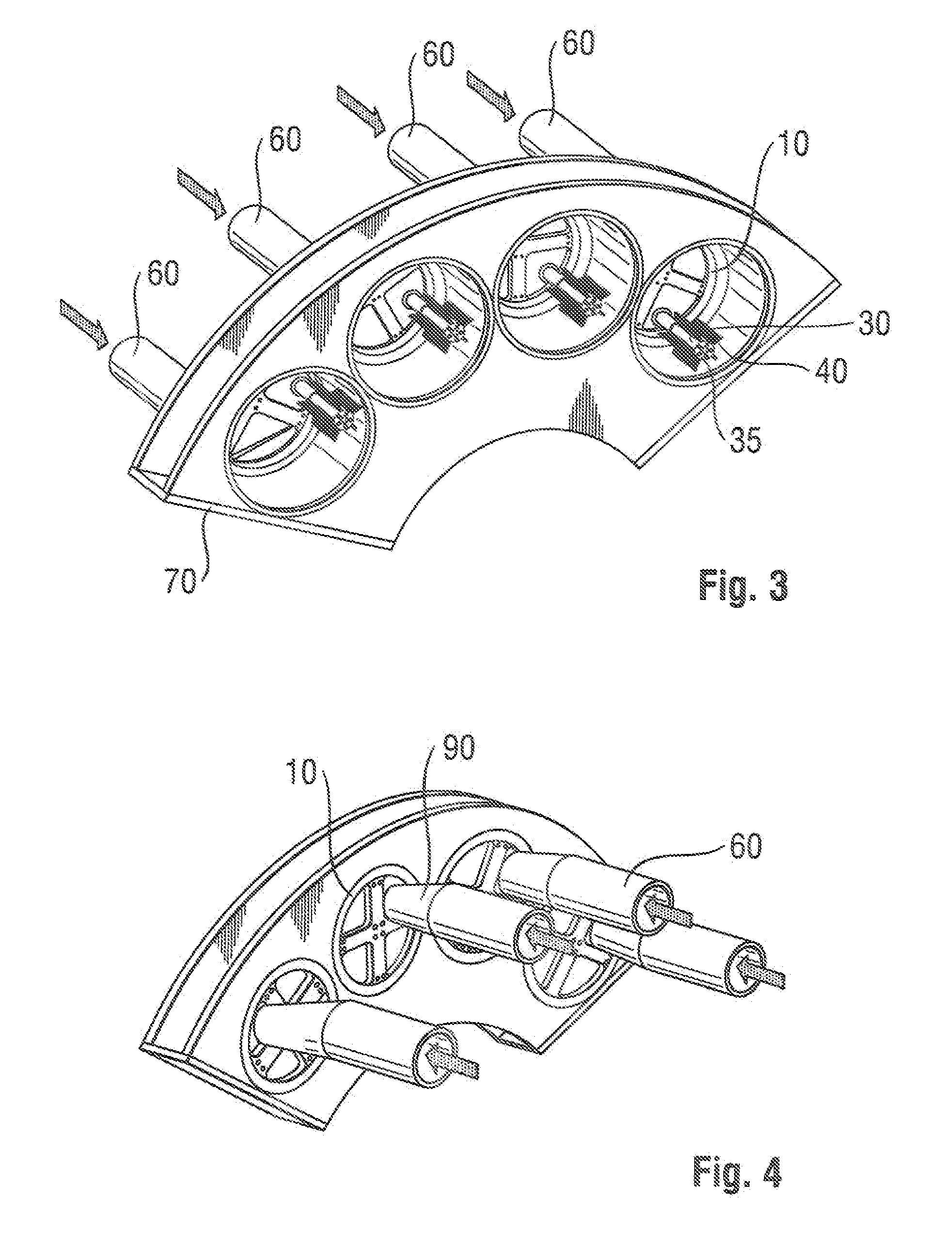Fiber air-laying process for fibrous structures suitable for use in absorbent articles
a fiber air-laying and fibrous technology, applied in the direction of pattern making, lap forming devices, needling machines, etc., can solve the problems of poor homogeneity, difficult to make unbonded fibrous webs, and holes in the web
- Summary
- Abstract
- Description
- Claims
- Application Information
AI Technical Summary
Benefits of technology
Problems solved by technology
Method used
Image
Examples
Embodiment Construction
[0022]Definitions
[0023]“Absorbent article” refers to devices that absorb and contain body exudates, and, more specifically, refers to devices that are placed against or in proximity to the body of the wearer to absorb and contain the various exudates discharged from the body. Absorbent articles may include diapers, pants, training pants, adult incontinence undergarments, feminine hygiene products, and the like. As used herein, the term “body fluids” or “body exudates” includes, but is not limited to, urine, blood, vaginal discharges, breast milk, sweat and fecal matter. Preferred absorbent articles of the present invention are diapers, pants, training pants and feminine hygiene products such as sanitary napkins and / or sanitary pads
[0024]“Absorbent core” means a structure typically disposed between a topsheet and a backsheet of an absorbent article for absorbing and containing liquid received by the absorbent article. The absorbent core typically comprises absorbent material such as ...
PUM
| Property | Measurement | Unit |
|---|---|---|
| width | aaaaa | aaaaa |
| speed | aaaaa | aaaaa |
| diameter | aaaaa | aaaaa |
Abstract
Description
Claims
Application Information
 Login to View More
Login to View More - R&D
- Intellectual Property
- Life Sciences
- Materials
- Tech Scout
- Unparalleled Data Quality
- Higher Quality Content
- 60% Fewer Hallucinations
Browse by: Latest US Patents, China's latest patents, Technical Efficacy Thesaurus, Application Domain, Technology Topic, Popular Technical Reports.
© 2025 PatSnap. All rights reserved.Legal|Privacy policy|Modern Slavery Act Transparency Statement|Sitemap|About US| Contact US: help@patsnap.com



